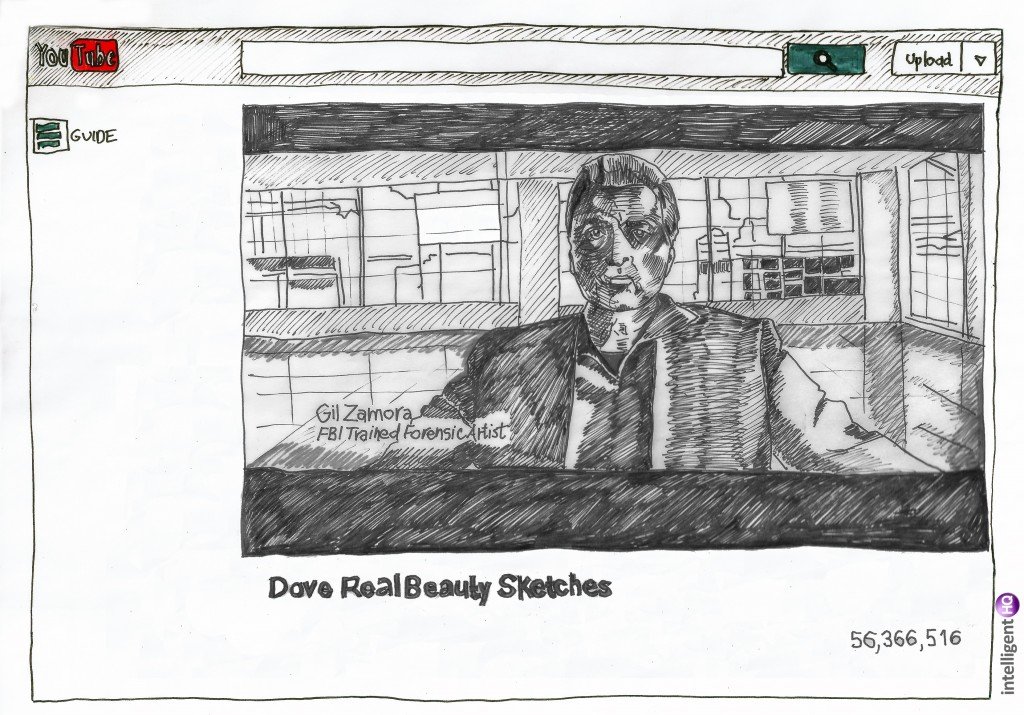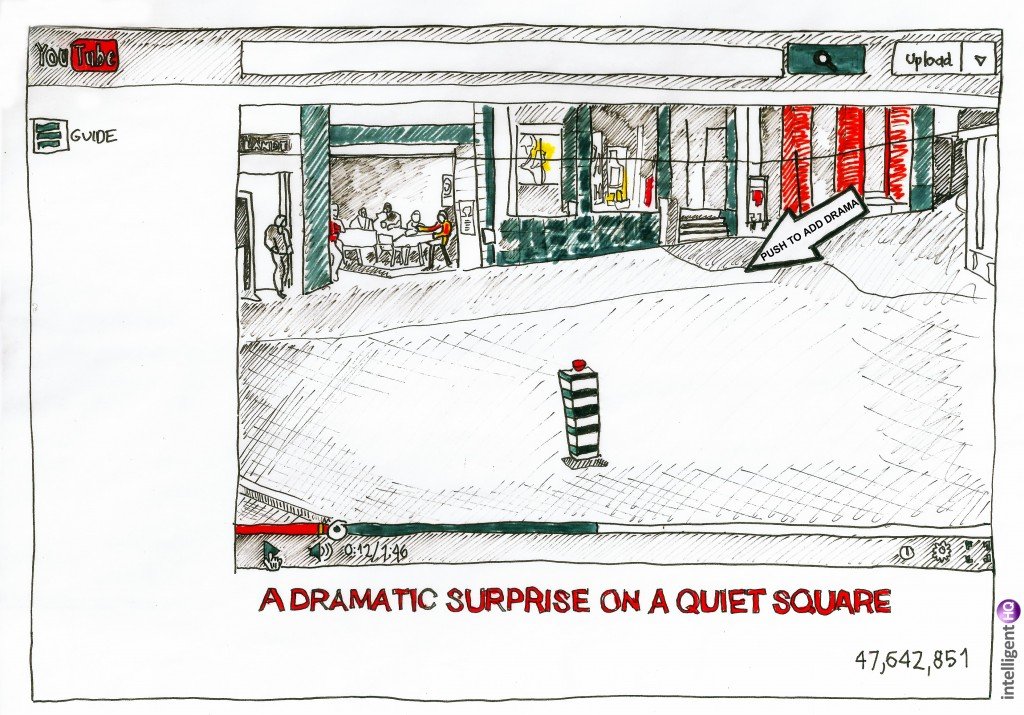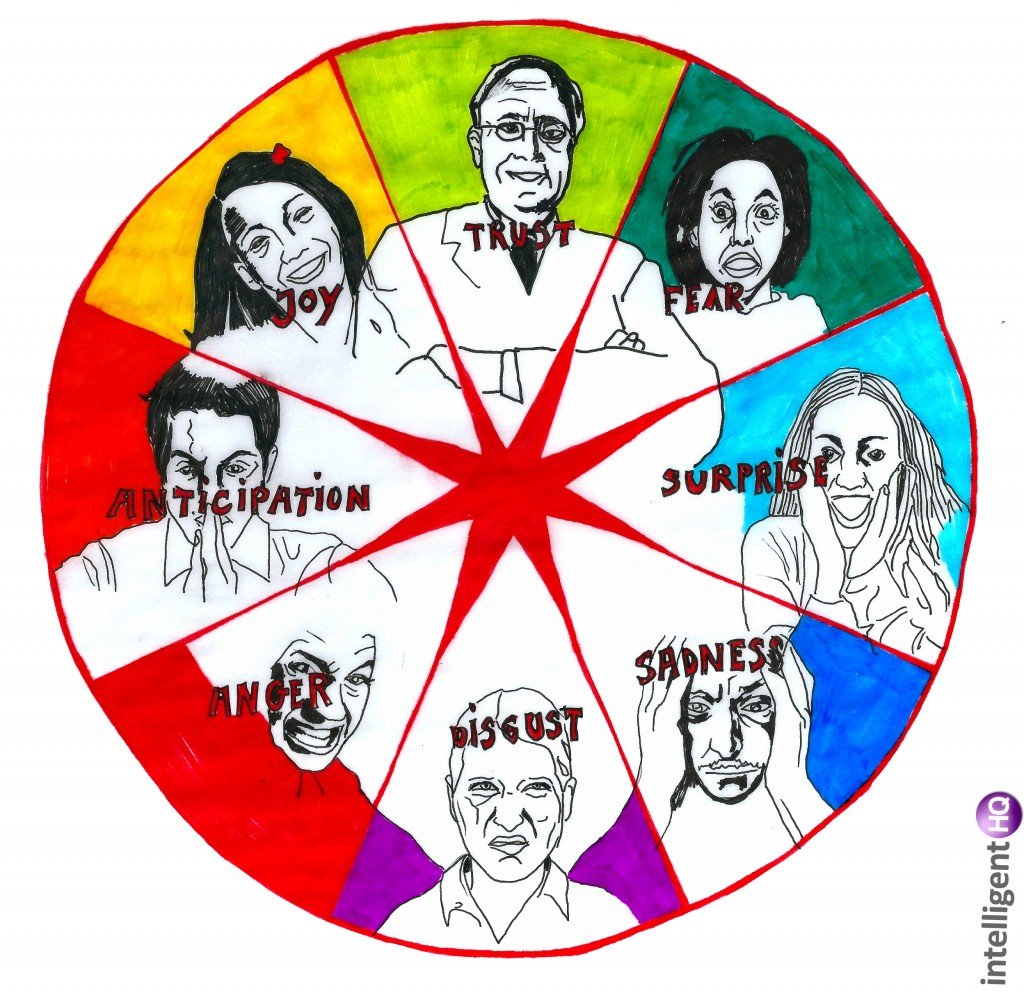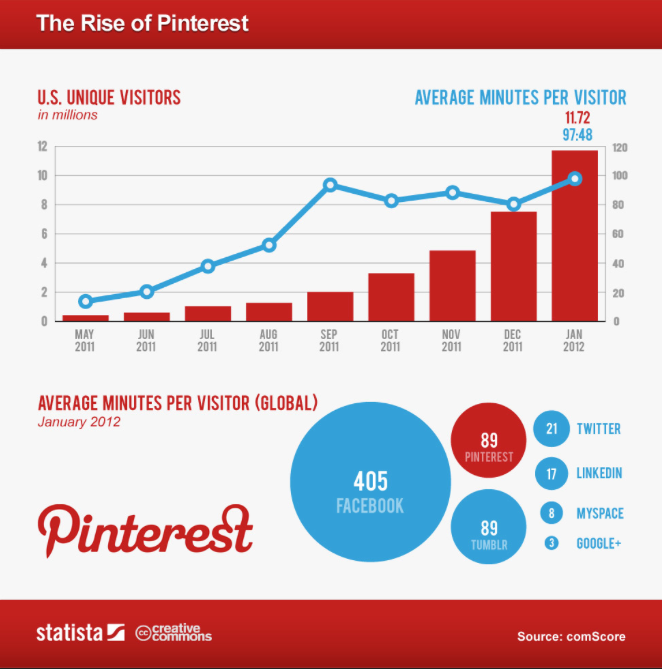Do emotions have a role on making an ad go viral? And if so, what kind of emotions? And what is necessary for an ad to be shared? Looking at a few examples of successful online ads that became viral lately, one finds interesting answers to these questions.
Wheel of Emotions, illustration – infographic by Maria Fonseca for IntelligentHQLast May, Dove Real Beauty Sketches, a fascinating short film done by Dove, acquired more than 114 million total views. Edited as if it was a short documentary of a “social experiment” conducted by Dove, the video showed an FBI-trained sketch artist, working on the top of a large San Francisco loft. There, the artist drafted portraits of several women without seeing them, based on the descriptions they made of themselves, by answering his questions. A stranger whom they had met the previous day then described the same women to the forensic artist. Through this second description, the artist would produce new sketches that would then be compared and discussed with the portrayed women. To our dismay, the strangers’ descriptions were invariably both more flattering and accurate than the sketches that had resulted from the self-descriptions. According to “Dove”, the aim of the film was to show women that they are more beautiful than they think they are. The film was a truly sensation, as its self-esteem uplifting message clearly resonated with a massive audience. Upon three days of its online release, it was uploaded in 25 different languages to 33 of Dove’s YouTube channels and it was viewed in more than 110 countries. Sketches campaign was successful because it had knocked into a deep-seated set of emotions that were truly meaningful for women.

Another example of an ad playing with contradictory strong emotions is Dumb Ways to Die which was part of a public service announcement campaign by Metro Trains in Melbourne, Victoria, Australia, to promote rail safety. The campaign went viral through sharing and social media, hitting 2.5 million views within 48 hours and 4.7 million views within 72 hours. Dumb Ways To Die intent was to alert people to be careful around trains. The video uses a catchy and sweet tune and an animation of colorful blobs that die all the time in uncannily funny ways, such as by “keeping a rattlesnake as a pet” or “selling both kidneys on the Internet”. By playing with black humour in such an unexpected way, the ad has attracted more than 65 billions of views, that generated hundreds of parodies and even a smartphone game.
One year ago, cable channel TNT placed a big red push button on a little anonymous square located in a Belgium town, where nothing really happens. A big sign with the text “Push to add drama” pointed to the push button, inviting passers-by to use it. When a more adventurous person finally decided to push it, a whole outbreak of activity began in the square, including a inept EMS unit dropping a man on a stretcher, a bicycle accident, a fistfight and the appearance of a wonder woman on a motorcycle. The reactions of the passers-by were filmed to produce the ad A dramatic surprise on a quiet square, that was launched on YouTube last year, and is now up to 47 million views.

All these videos are good examples of the way one can use emotions in a complex way, to produce successful marketing campaigns going viral on the Internet.
Turning Your Ad into A Viral One
Viral Marketing can be an excellent way to get your brand known in a shifting marketing world, where a brand has to figure out its way amongst trillions of online ads each year, millions of daily tweets and billions of pieces of content being shared on Facebook every day. How can a brand cut through the messiness and noise of online advertising?
Like the examples given before, successful viral campaigns construct massive amounts of views that break through the noise. They generate immense brand exposure and free related press, besides promoting high levels of social engagement, sharing, and brand interaction. This can lead to sharp increases in digital brand advocacy, massively improvement organic search rankings and finally increased brand engagement.
What are the key ingredients to create a successful viral campaign? How can one make an ad that plays with the emotions of the viewer in such a way that it will make her want to share it? First one should think carefully about how your company, product or service is related to a particular area and what type of human emotions are the ones your product triggers within your target demographic.

Attractive Title and a Memorable Storyline
Research suggests that an attractive title and a memorable storyline filled with strong emotions are the key elements that prompt that first click and its subsequent share that all advertisers are looking for. Be sure though, to play smoothly with the use of emotions, creating in your “storyline” moments of breaks or gaps, so your viewer doesn´t become overwhelmed.
Successful ads use story telling in creative ways to convey highly charged emotional messages that the viewers can relate or identify with. Thales Teixeira, a professor at Harvard School of Economics, which has conducted research on viral advertising, refers that: “When entertainment creates an emotional connection, it leaves a lasting effect on our minds. Psychologists have shown that emotions are memory markers, and if you feel very strongly about something during the day, your brain will more likely retain the information related to that emotion longer”. So be sure you use the proper emotions and in the right measure!
But to play with emotion is just part of the game. For an ad to be successful it has “to be watched until the end and then shared”, says Thales Teixeira. His work led him to discover that if emotionality explains why people view more some ads then others, when it comes to sharing, emotions just clarify part of the story. What are the incentives for someone to be willing to share an ad? Thales Teixeira proposes the term “Advertising symbiosis” as being one of the answers. “Advertising symbiosis” is the mechanism employed by the ad that makes both the advertiser and the viewer to mutually benefit from the act of sharing. Likewise, for an ad to be successful as a brand, one should ask: “What is it that my consumers would like to talk about to their friends and their acquaintances?” In creating content that allows them to have a meaningful social conversation, that both deliverers and propagates your brand message, both the consumer and the brand mutually profit from the process of sharing.
Another important issue is how to introduce your branding: if it is important not doing it too much, not enough branding can risk creating confusion on the viewer on what is it the video is advertising. The solution suggested by Teixeira’s research is a technique entitled “brand pulsing” wherein the brand or product is shown repeatedly but not too intrusively throughout the course of the video.
The Right Emotional Chords: Amazement, Interest, Astonishment, Uncertainty and Admiration
If strong emotional stimulation is the key to viral success, what are the correct emotional chords that enable a video to be shared, the advertiser might ask? Even though there is not enough studies on this issue, some research has already been done, such as the one done by Jonah Berger in his book: “Contagious– How Things Catch On“, or the study “The emotions of highly viral content”, done by the creative digital agency FRACTL. Both studies suggest that if positive emotions are much more prevalent in viral ads than negative emotions, there are still some examples of ads becoming viral by activating negative emotions through anticipation or surprise (which is the case of the ads described earlier). Emotions of curiosity, amazement, interest, astonishment, uncertainty and admiration, are the ones mostly present in highly shared viral ads. If that content hits deep down on some meaningful chord that says something to the viewer, one can be sure it will be shared.
More info at:

Maria Fonseca is the Editor and Infographic Artist for IntelligentHQ. She is also a thought leader writing about social innovation, sharing economy, social business, and the commons. Aside her work for IntelligentHQ, Maria Fonseca is a visual artist and filmmaker that has exhibited widely in international events such as Manifesta 5, Sao Paulo Biennial, Photo Espana, Moderna Museet in Stockholm, Joshibi University and many others. She concluded her PhD on essayistic filmmaking , taken at University of Westminster in London and is preparing her post doc that will explore the links between creativity and the sharing economy.





























